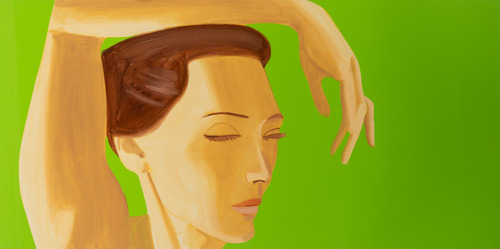Alex Katz: The playful art that anticipated Pop Art
At 94 years old and converted into one of the cult figures of American art of the 20th century, Alex Katz maintains intact that creative impulse guided by the conscience of someone who knows that he cannot stop doing what he does.
At a time when abstractionist trends led by American expressionism predominated, Katz challenged the art establishment by entering the scene as a representative of the new American figuration. Little did he care about the criticism and contempt that his work aroused when in the 1950s he made himself known with a work that fled from the fashions and orthodoxies that prevailed in the art world at that time. In fact, thanks to that time of marginalization and misunderstanding, Katz managed to find his own artistic identity that over time has managed to unanimously conquer the artistic circuit. The contempt of a critic who was never very clear about where to place him, has given way to endless acknowledgments and praises that translate into the good moment his work is going through in the art market.

Katz began to paint sophisticated characters drawn from everyday life and images from the media long before pop art did so, but far from wanting to champion this style, the Russian-born artist distanced himself from it to continue being a free verse within the history of art . Although it is true that as a precursor to the awakening of pop art, he shares certain traits of the aesthetics developed by Warhol, Jasper Johns and company, his work is much more enigmatic and less political, whose nuances make it impossible to reduce his vast trajectory to a single style. In fact, the influences condensed in his plastic language cover different artistic practices, which, like music, fashion or cinema, intermingle with the pictorial tradition of Monet, Matisse Utamaro or Pollock.
Proof of it is the monumental “Hommage to Degas” that was carried out in 2020 is a magnificent example of the importance that his graphic production will acquire from the 1960s. His skill in engraving techniques is evidenced through the multiple series to which he has resorted since 1965, fundamentally to make his iconic portraits, whose treatment invites the viewer to focus more on the pictorial experience than on the specific elements represented. they are reflected.
“Hommage to Degas”, whose title already anticipates the admiration he felt for the great Impressionist masters and in this particular case for Degas, is inspired by the iconic dancers of the French painter, reinterpreting their image under the hallmark of his plastic identity. The female figure whose simplified forms are outlined against a monochrome background, vibrant and lacking in perspective, denote the residue of European painting. In this sense, the shadow of his admired Heny Matisse occupies a privileged place in the imagination of Katz, who from the moment he became acquainted with his work was dazzled by the apparently easy technique of the French painter and his great sense of color, composition and economy of means
Through the close-ups, Katz magnifies the portrayed characters, transforming them into true icons whose clean and reductionist but plastically forceful lines lead to a lyrical and emotional air that distances him from pop art. The pristine flatness of his surfaces and colors allows us to glimpse the imprint of his brushstrokes, giving his work a less industrial finish than that of his contemporaries.
In his eagerness to capture movement contained in a fleeting instant, Katz approached Pollock by incorporating the overflowing energy and formal logic of fast, gestural painting, without giving up his style in the slightest. In this sense, Katz managed to print in his work “that immediate sensation of what one sees before focusing his gaze” capturing the delicate, elegant and ethereal essence that is concentrated in the dancer’s gesture. In the same way, the use of light as a modulating element of the surface will be decisive, which, as in this case, accentuates the serene and graceful character of the dancer but also her ephemeral nature.
His work built in border spaces gives voice to the happy, playful and serene America that, like a hymn to life, invites us to enjoy the here and now. Why, as Katz himself stated, “eternity only exists in the present”






